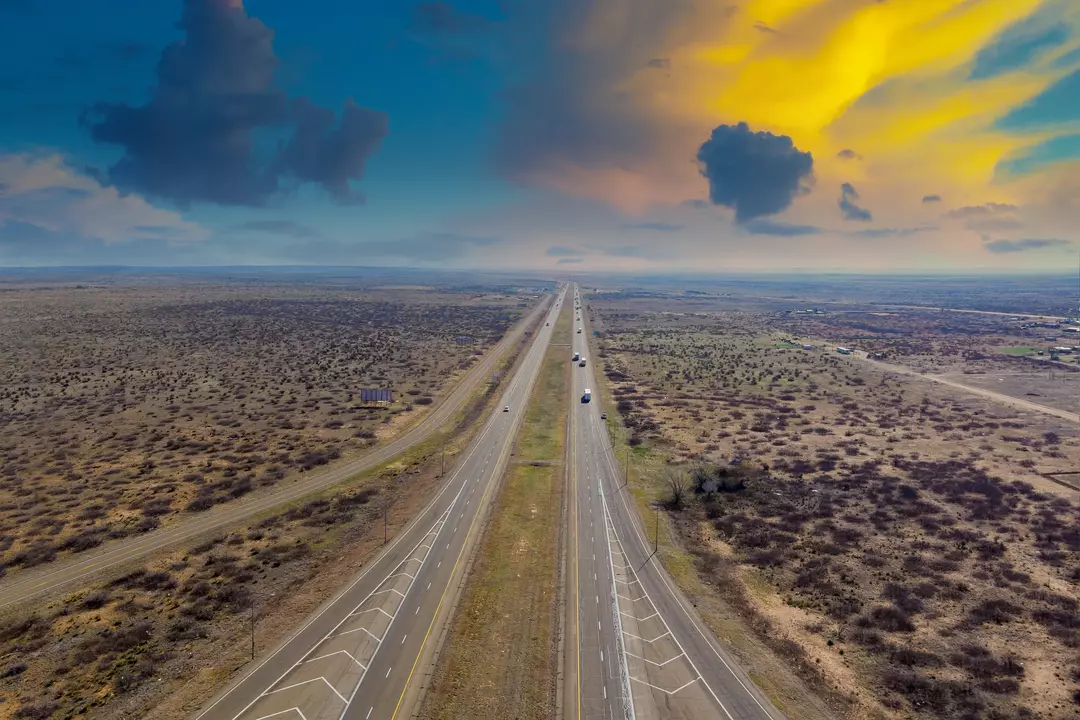The National Highway Traffic Safety Administration estimated nearly 43,000 traffic fatalities in the U.S. in 2021, the highest number of deaths since 2005. Each number represents a life lost and a family left grieving a loved one.
Traffic safety affects everyone, and governments continue to focus on decreasing deaths and serious injuries nationwide. As we examine traffic data, we’re better able to understand why fatality rates are so high and how we can improve safety. Here are some New Mexico traffic statistics, facts, and road safety tips to help keep you and your family safe.
New Mexico Traffic Statistics
Traffic statistics vary widely by state and region. Nationwide, the 42,915 traffic fatalities in 2021 represented a 10.5% increase from the year before—the highest percentage increase in the history of the Fatality Analysis Reporting System.
How does that data compare to statistics from New Mexico? The following data comes from the U.S. Department of Transportation for the state of New Mexico.
Fatalities and Serious Injuries
Data from 2022 and 2023 is still incomplete, but we can see which direction traffic accidents are trending by reviewing the previous few years.
- 2016: 405
- 2017: 380
- 2018: 392
- 2019: 425
- 2020: 398
- 2021: 481
- 2017: 13,460 (29.3%)
- 2018: 13,597 (29.1%)
- 2019: 14,192 (29.5%)
- 2020: 10,910 (29.8%)
- 2021: 12,404 (30.4%)
Although the number of fatalities and vehicle injuries in New Mexico decreased in 2020 due to the COVID-19 pandemic and lockdown, the percentage of fatal crashes rose in 2021. Keeping the fatal crash count low will be difficult as more people return to the roads and drive more miles.
2021 Statistics
- 17% to 19% of accidents were hit-and-run crashes each year
- 37% of total fatalities and 5% of total crashes involved alcohol
- 37% of pedestrian fatalities involved alcohol
- 14% of unbelted passengers in crashes died, compared with only 0.2% of belted occupants
- The average day in New Mexico involved 112 crashes, 49 injuries, and one fatality
Top Contributing Factors in Crashes
- None/no driver error: 31%
- Inattention: 18%
- Failure to yield right of way: 6%
Top Contributing Factors in Fatalities
- Drug-induced impairment: 13%
- Alcohol-induced impairment: 12%
- Driver inattention: 13%
New Mexico Road Safety Facts

As mentioned above, inattention was one of the highest faultable factors in New Mexico crashes. Statistics from the NHTSA support this: studies have shown that sending or reading a text takes your eyes off the road for five seconds. At 55 MPH, that’s like driving the length of a football field with your eyes closed.
It’s not possible to drive safely unless you remain focused on the road. In 2022, 3,308 U.S. drivers died in accidents involving distracted drivers. Avoid talking, texting, eating, drinking, changing the stereo, or focusing too much on the navigation system.
Room for Improvement
Traffic fatalities in New Mexico have been higher than the national average for the past five years. In 2021, New Mexico had 1.79 fatal crashes per 100 million vehicle miles traveled. The national average was 1.37.
What are the areas for improvement?
- Hit and runs were at record-high levels in the past five years.
- The rate of drug-involved fatal crashes rose to their highest levels in the last 5 years.
- While the number of male drivers involved in alcohol-related traffic accidents/fatalities has decreased, there has been a rise in the involvement of female drivers in such incidents. Although there was a decrease in male drivers involved in alcohol-related traffic accidents/fatalities, there has been an increase among female drivers.
Despite the vast need for further improvement, some areas showed promising results in 2021.
- The number of rollover crashes has decreased consecutively two years in a row.
- 50% of all pedestrians are alcohol involved. However, the amount dropped to 37% in 2020 and 2021.
- Pedacyclist fatalities have dropped three years in a row.
New Mexico Road Safety Tips

While there are situations where a crash is not your fault, there are still things you can do that will protect you and your family. New Mexico drivers must also learn to drive in extreme heat during the summer months and light snow during the winter. Here are some driving tips for improving New Mexico Road Safety.
Bring Sunglasses
In the summer and winter, drivers passing through New Mexico may be susceptible to sun glare. Extreme sunlight can obscure your vision and decrease your ability to avoid hazards, so drivers should always keep polarized sunglasses on hand.
Check Your Tires
Always examine your car before taking a long trip and maintain it regularly. Keeping your vehicle in good condition can reduce the risk of breaking down and being stranded far from help.
The tires are especially critical. The NHTSA recommends that drivers do the following to ensure their tires don’t fail.
- Replace tires with uneven wear or insufficient tread.
- Replace tires every six years, regardless of their condition.
- Regularly inflate your tires. Even without a puncture, tires lose air over time and can become underinflated. This applies to the spare tire as well.
Bring an Emergency Kit
When unexpected problems arise, having an emergency kit on hand is essential.
Whether you buy one from the store or make one yourself, your kit should include the following:
- Water, Gatorade, or another hydrating fluid
- Non-perishable snacks like peanut butter or granola bars
- Bandages, alcohol wipes, and gauze
- A flashlight with extra batteries
- Jumper cables
- Road flares
- Blankets
Double-check your emergency kit before you leave on a long trip, and add anything else you might need. Don’t be afraid to go overboard; it’s better to be over-prepared than underprepared.
Snow Driving
Winters in New Mexico typically hover around 40 degrees Fahrenheit, and the southern part of the state rarely gets snowfall. However, drivers should still prepare for any possible road conditions.
To avoid losing control, you should always slow down and increase your following distance when driving in snow. The cooler weather may also cause tire pressure to drop, so checking your tires becomes even more critical.
During the winter, parents often dress their children in thick coats. However, this can become a hazard for children who require car seats. To avoid interfering with the seat harness, buckle your child in before covering them with any coats or blankets to keep them warm. Safety should always be the priority.
Improve Road Safety with Interwest Safety Supply

At Interwest Safety Supply, we know how important it is to stay safe on the roads. We have improved traffic conditions for over 40 years by supplying the government and highway construction industry with 3M-certified traffic safety signs and equipment. Let us help you improve New Mexico road safety today!







